We have much more to do and your continued support is needed now more than ever.
Education Newsletter Fall 2021

Hello, from the National Wildlife Federation’s Education Team
Our team strives to provide all people with equitable access to nature, scientifically-based environmental education, and knowledge regarding the history and principles of environmental justice. But ultimately, it’s students, parents, teachers, faith leaders, scientists, and community members who are transforming their cities, backyards, and places of worship to keep their communities healthy and their wildlife thriving.
To bring these stories to light, we have updated our newsletter to spotlight the work of community leaders like you! In this issue, we discuss outdoor classrooms with Eco-Schools USA educator Stefan Moss, catch up with the faith and youth leadership work in Detroit, and share information about the newly released Schoolyard Habitats® Planning Guide.
For more stories, events, and resources, you can follow us on Instagram @NWFeducation.
Enjoy!

Digital Content Manager NWF’s Education & Engagement
Is Outdoor Education the Future?
When we spoke with Stefan Moss, a science educator at Whitefield Academy, a K-12 registered Eco-School in Atlanta, Georgia, he was working on a garden project collaboration with Whitefield’s middle and lower school. The partnership allows students the chance to get their hands dirty and learn about sustainability, self-sufficiency, and environmental stewardship. His answers are captured below:
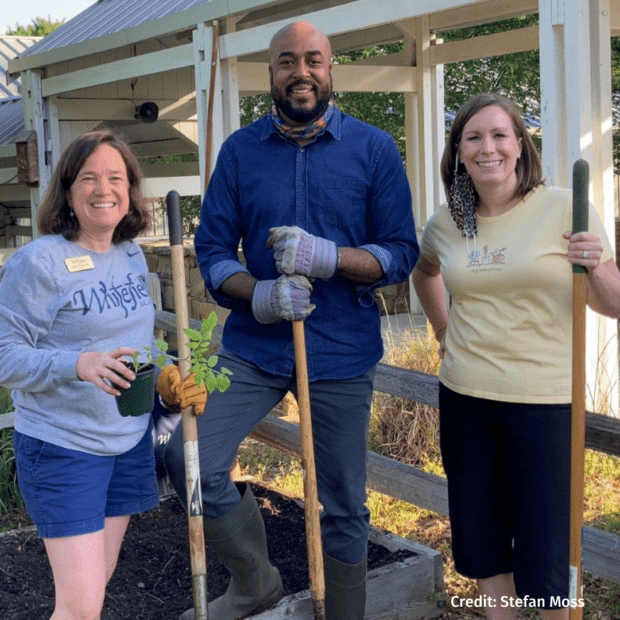
Why do you think outdoor classrooms are important?
The payoff is immediate as an earth science teacher. It’s an easy win — getting them out of the four walls! There are so many collaborative things you can do. You can partner with an art teacher, and the students can draw the wildlife they see, or if you’re an English teacher, you can have the students write poetry about what’s happening in nature. There are many cross-cutting ideas and opportunities for real collaboration.
Tell us about your Farm to Cafeteria Project
Our long-term goal is to harvest fresh food from the campus garden and make it available in our school cafeteria, which shortens the supply chain and eliminates the need to purchase from out of state or elsewhere. When we grow locally, we know it saves fuel and provides confidence that there’s no funky stuff! We’d love it if, in the future, all the fresh things we eat are grown on campus. We are also building a relationship with a community food bank to provide fresh vegetables.
What is your perspective on outdoor classrooms as a science teacher?
They are awesome! You can observe, collect data, practice mindfulness, and potentially discover new things. It’s all right there in your face. Nature has so much to offer and to teach us. Outdoor education is the future.
Why do you like being part of Eco-Schools USA?
Being part of the National Wildlife Federation is important because it shows that you have a deeper commitment to the work of environmental stewardship and conservation beyond, “we’re a school that teaches science, the end.”
—Stefan Moss
We want students to understand, on a deeper level, that there are actual applications and tangible benefits outside of the classroom. Students will grow up and say, “I had a garden when I was in middle school, I’m going to have a garden in my backyard, and I’m going to eat local.”

#WaterJustice
This past October, the National Wildlife Federation’s Sacred Grounds program collaborated with Michigan Interfaith Power and Light and other local Detroit partners to host a session called “Putting Faith Into Action: Reducing Your Drainage Fee, Installing Rain Gardens and More.” This collaboration was timely in that a new drainage charge from the Detroit Water and Sewer Department (DWSD) has cost Detroit’s houses of worship tens of thousands of dollars a year. This webinar helped houses of worship address stormwater management practices that support wildlife, pollinators, and the local community.
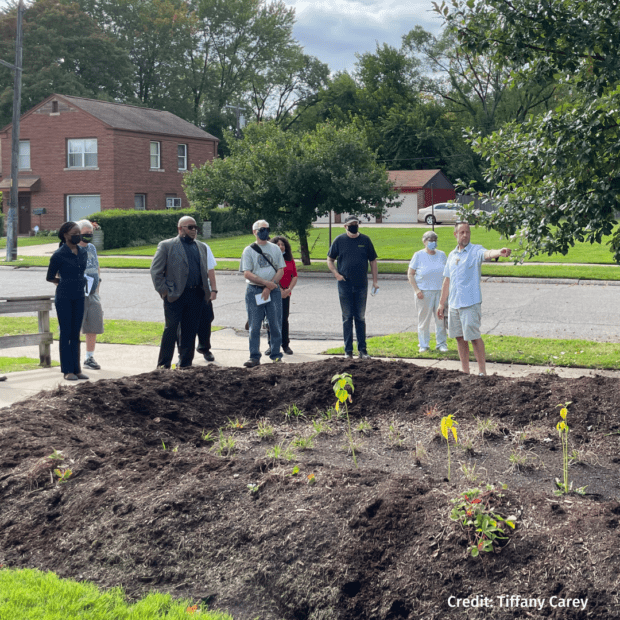
What’s happening in Detroit?
There have been heavy rains in the Detroit area, and that, combined with their sewer system (which processes both wastewater and stormwater runoff), creates one billion gallons of untreated sewage. This sewage flows into the Detroit River, and ultimately the Great Lakes.
As an attempt to mitigate this, the Detroit Water and Sewer Department has instituted a drainage fee, but this has put an unexpected burden on Detroit’s faith communities since 2017.
How Faith Communities are Responding
This event brought approximately 30 people who had strategic dialogues uplifting the challenges and solutions related to this drainage charge and the immediate actions faith communities could take to reduce fees while still creating natural spaces for their communities. The conversation took place at St. Suzanne Catholic Church, a National Wildlife Federation’s Sacred Grounds Designated site. Attendees were given a tour of their rain gardens and green stormwater infrastructure (GSI) installations, one of which was installed with the support of the Sacred Grounds program.
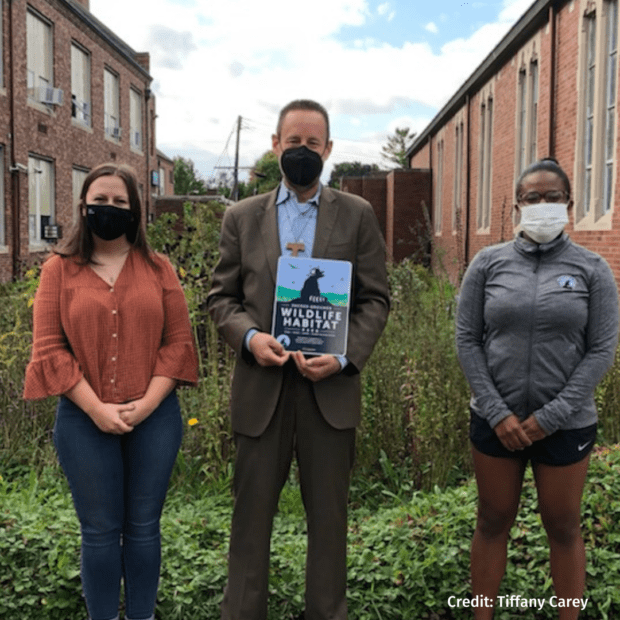
“As we support faith communities in creating native plant wildlife habitat gardens, we know that these projects and efforts don’t exist in isolation but serve as vessels to combat the impacts of climate change and systemic environmental injustices in communities that are most vulnerable.”
—NWF’s Tiffany Carey
Faith leaders and Detroit residents shared their motivations, challenges, and victories as they navigate this work for their congregation and community. “Through the work of the National Wildlife Federation Sacred Grounds program, we truly believe healthy habitats and healthy communities go hand in hand,” says Tiffany Carey, a Senior Education & Engagement Coordinator for NWF’s Great Lakes Regional Center.
Youth Leadership in Detroit
This past summer, National Wildlife Federation’s Detroit Leadership and Environmental Education Program (D-LEEP) engaged the next generation of environmental and ecological leaders from frontline high schools through outdoor excursions, a critical ecology curriculum, and community-based sustainability projects.
Students and families learned about beekeeping with SW Beetroit, bird-watched with Detroit Audubon and Metroparks, harvested maple syrup, and more!
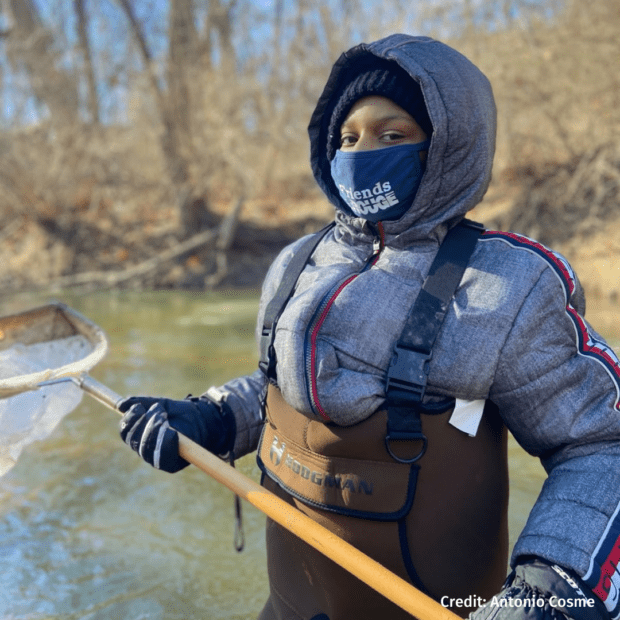
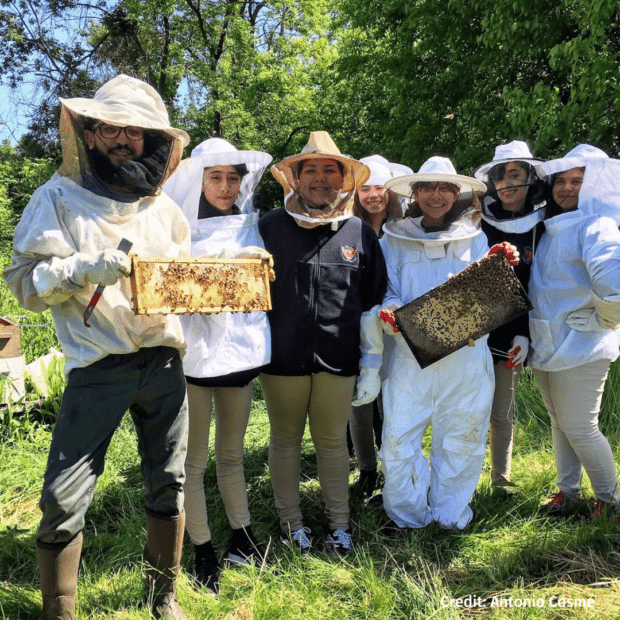
Gardens, Kayaks, and Canoes
Schools in Detroit end each year with a sustainability project that each school develops for the students. But with students attending school at home, they were not able to move their projects forward. In response, D-LEEP partnered with Keep Growing Detroit to enroll families in their Garden Resource Program. Twelve families built garden beds, filled them with veggies, and ultimately fed more than 50 families.
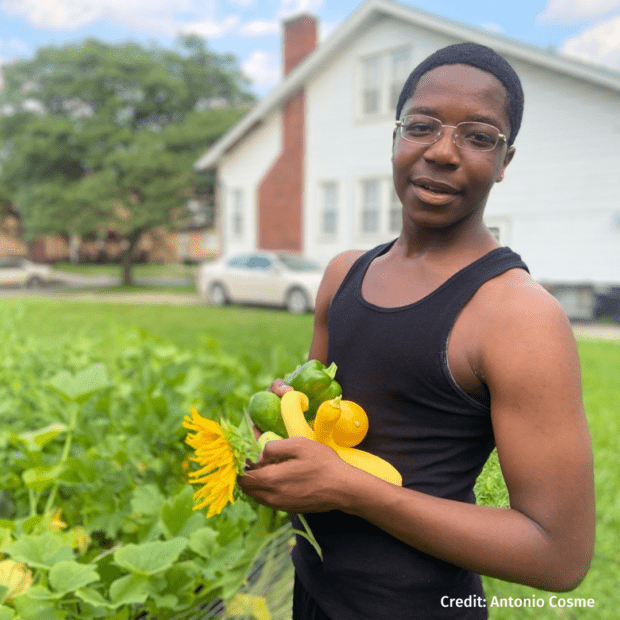
Another vital partnership has been with Black to the Land, a local Detroit nonprofit. Their annual summer event “Browns, Blacks, and Kayaks!” had D-LEEP students and over 100 Black and Brown Detroiters paddling on the Huron River.

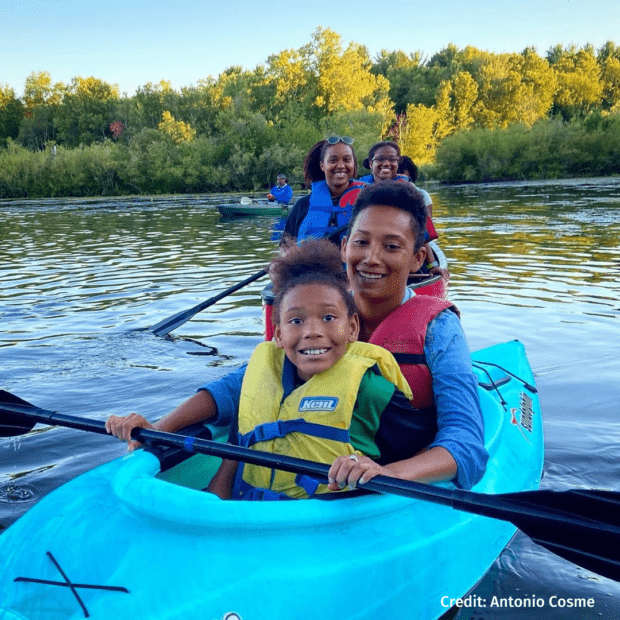
Collaboration Over Competition
A large part of D-LEEP’s success is its focus on collaboration over competition. NWF’s Antonio Cosme, the program’s education coordinator, intentionally partners with local organizations because they believe students should be active in the broader green community. Despite pandemic struggles, Antonio has found the right mix of education, time outdoors, and engaging digital content and hopes the program will one day be in cities across the nation!
For more information on community action in Detroit, check out Sacred Grounds and D-LEEP.
Building Community Resilience
Since 1996, students, educators, community volunteers, and partners have been stepping up to create and restore habitat on school grounds as part of the National Wildlife Federation’s Schoolyard Habitats® program. Once complete, these transformed outdoor spaces quickly become a place where all students can connect with nature through hands-on learning.

Why Schoolyard Habitats?
- Provide equitable access to nature– This often leads to overall improvement in student, staff, and community mental and physical well-being.
- Hands-on learning- Grow outdoor learning environments that provide environment-based learning and expand capacity for classroom learning.
- Empowered students- Watch students’ confidence soar as they learn new skills.
- Restore local native biodiversity- By planting milkweed and nectar plants for pollinators.
- Create community climate resilience- You lower temperatures, absorb carbon, and reduce stormwater runoff when you plant trees and native plants.
As we close in on 10,000 NWF Certified Schoolyard Habitats® across the country, join us for an ongoing series of webinars specifically designed around the new Schoolyard Habitats Planning Guide. Next up on November 10th, teachers will share knowledge about best practices for outdoor learning.
Can’t make it for the live webinar? Links to recorded webinars will be available on our website to view at a time that works best for you. There’s never been a better time to design and implement a Schoolyard Habitat at your school!





















